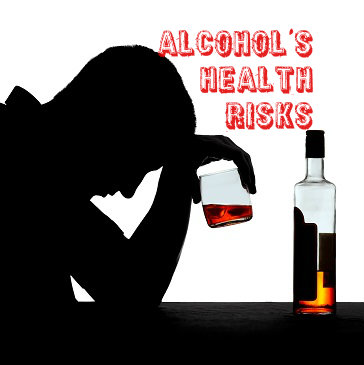How Does Heavy Drinking Impact the Risks For Heart Disease And Diabetes?
Heavy drinking is a term used to describe a level of excessive alcohol consumption that steeply increases a person’s chances of developing alcohol use disorder (a condition which includes both alcohol dependence and non-dependent alcohol abuse). Fully 25 percent of all people who drink excessively meet the requirements for diagnosis of this condition. Heavy drinking can also increase the risks for other serious health problems. In a study published in 2013 in the journal Alcohol and Alcoholism, a team of Japanese researchers looked at the impact of heavy alcohol consumption on the risks for developing heart disease or diabetes.
What’s Considered Heavy Drinking?
According to guidelines issued by the National Institute on Alcohol Abuse and Alcoholism (NIAAA), the vast majority of people keep their risks for developing alcohol use disorder to a minimum when they limit both their daily and weekly alcohol consumption. As a rule, men minimize their risks when they consume no more than four drinks on a single day and 14 drinks in a single week. Women minimize their risks when they consume no more than three drinks on a single day and seven drinks in a single week. The NIAAA defines heavy drinking as any pattern of alcohol consumption that exceeds either the daily or weekly recommended amounts for men or women.
 Heavy Drinking And Alcohol Use Disorder
Heavy Drinking And Alcohol Use Disorder
Twenty percent of all adults who drink heavily once a month develop alcohol dependence (alcoholism) or clinically diagnosable alcohol abuse. Thirty-three percent of all adults who drink heavily once a week develop one of these problems, while fully 50 percent of all adults who drink heavily twice a week become alcohol abusers or alcoholics. The definition for alcohol use disorder comes from the American Psychiatric Association (APA). The APA once considered alcohol dependence and alcohol abuse to be separate concerns. However, in recognition of the highly linked nature of the two conditions, the organization officially acknowledged them as aspects of a single disorder in 2013.
Heart Disease And Diabetes
Heart disease and diabetes are both relatively common, potentially fatal chronic health problems. Common forms of heart disease (also known as cardiovascular disease) include coronary artery disease, stroke and heart attack. Some people affected by the blood sugar disorder diabetes have an often-inherited condition called type 1 diabetes; however, most affected individuals have an acquired condition called type 2 diabetes. Among other factors, risks for both heart disease and type 2 diabetes are associated with a buildup of fat in the abdominal region and an increase in a type of blood-borne fat called triglyceride.
Risks Produced By Heavy Drinking
In the study published in Alcohol and Alcoholism, researchers from Japan’s Hyogo College of Medicine used an examination of 21,378 men between the ages of 35 and 60 to compare the levels of abdominal fat and triglyceride accumulation associated with abstinence from alcohol consumption, light alcohol consumption, heavy alcohol consumption and very heavy alcohol consumption. They performed this comparison in order to estimate some of the diabetes- and heart disease-related risks associated with drinking. The researchers defined light drinking as intake of less than 0.78 ounces of pure alcohol a day. They defined heavy drinking as intake of anywhere from 0.78 to 1.55 ounces of pure alcohol a day. They defined very heavy drinking as any level of intake above 1.55 ounces of pure alcohol a day. In the U.S., a single standard drink of alcohol contains 0.6 ounces of pure alcohol.
The researchers found that, compared to both non-drinkers and other drinkers, very heavy consumers of alcohol have significantly increased risks for developing the abdominal fat and triglyceride increases that can contribute to the onset of heart disease or type 2 diabetes. They also found that, compared to both non-drinkers and other drinkers, light drinkers have significantly lowered risks for this body fat and triglyceride accumulation. In addition, the researchers concluded that, compared to very heavy drinkers who exercise regularly and don’t smoke, very heavy drinkers who smoke and fail to get regular exercise have substantially higher chances of accumulating abdominal fat and triglyceride. Conversely, light drinkers who don’t smoke tend to accumulate abdominal fat and triglyceride considerably slower than light drinkers who do smoke.
The authors of the study published in Alcohol and Alcoholism also concluded that all four groups of participants (non-drinkers, light drinkers, heavy drinkers and very heavy drinkers) had substantially higher chances of developing high blood sugar levels (characteristic of diabetes) when they had increased levels of abdominal fat. This finding indicates that an accumulation of abdominal fat boosts the risks for type 2 diabetes even when an individual keeps his or her alcohol consumption within recommended daily and weekly amounts.
See How Alcohol Use Among Teens Has Changed Over Time And Learn The Risky Alcohol Behaviors



